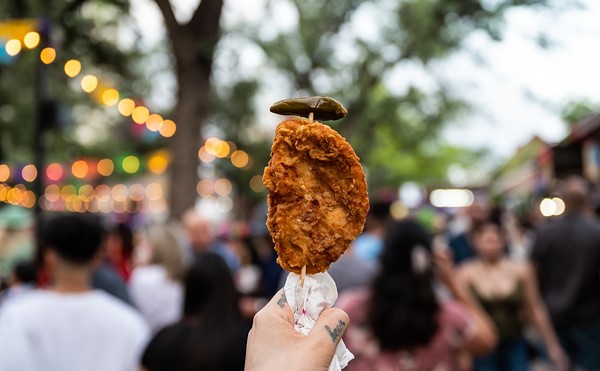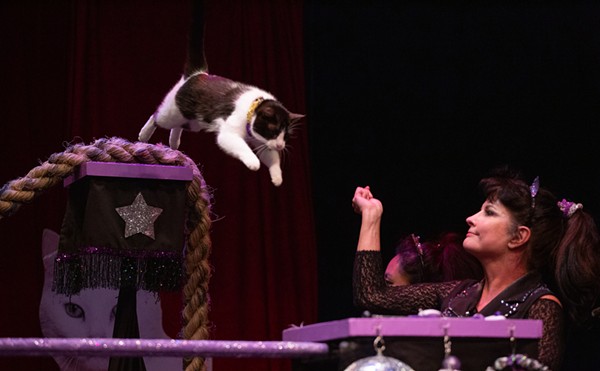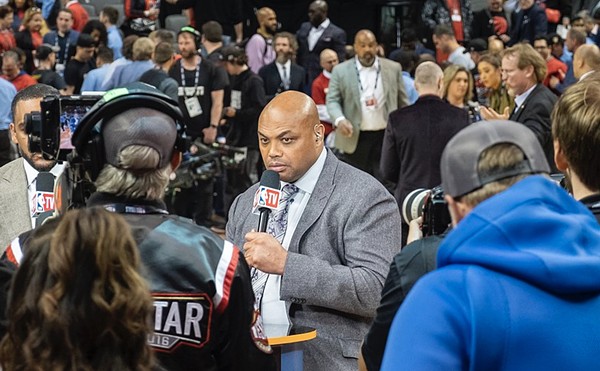Some suicide bombers are reportedly motivated by a Qu’ranic promise: To reward martyrdom, 72 virgins will serve their pleasure in the afterlife. However, those erotic expectations are probably based on a linguistic misunderstanding; scholars contend that the correct translation is not “virgins” but “raisins.”
So it is possible that the 9/11 terrorists are now sitting around in hell gnawing on dried sour grapes. Yet what is so special about virgins anyway? Indeed, what is a virgin? According to Hanne Blank, an independent scholar whose name must have propelled her toward the topic, virginity is an elusive condition that is hard to put one’s finger on (though it makes one whip out the worst attempts at wit). No physical evidence — neither urine samples nor a whiff of foul breath nor any other symptoms once used as tests — can determine whether someone is a virgin. Nor are pain and blood reliable signs that virginity, whatever it is, has been lost. In fact, what constitutes sexual initiation depends on shifting definitions of what constitutes “having sex.” If vaginal penetration by a penis is the only way to relinquish virginity, the condition is more widespread and enduring than many believe.
Homo sapiens are the only species that seems to pay any attention to virginity, though the kind of attention — not always benign — that is paid differs widely across cultures. Because sexual inexperience is more significant and consequential in women than men, Blank concentrates on female virgins. Approaching virginity first as a physiological phenomenon, she examines the difficulty in finding anything in common among bodies that have always been chaste. Anyone who believes that human virgins are uniquely equipped could be accused of cherry-picking the evidence, since other species possess far more impressive hymens, and human hymens are often indistinguishable before and after sexual initiation. It was not until 1544 that anatomists identified the human hymen, and even today most people have little idea what it looks like or where it begins and other genital tissue ends. If an unbroken hymen were the mark of virginity, equestrians would be wantons, and hookers with durable nethers would be lifetime vestals.
Blank’s subject leads her to pockets of astounding information. She examines the persistent superstition that sleeping with a virgin provides immunity against venereal diseases, a malign misconception that in contemporary South Africa, with the highest rate of AIDS, has produced an epidemic of rapes against girls. She also reviews the medical literature on morbus virginaeus, the supposed disease of virgins. Its symptoms were thought to include paleness, amenorrhea, lack of appetite, and pica (a craving for dirt, paint, and clay); its remedy was copulation. Blank might have referred to The Virgin Suicides, Sofia Coppola’s maiden film, in which five sisters aged 13-17 kill themselves. When, after her first attempt, a physician asks the 13-year-old why, she replies: “Obviously, doctor, you’ve never been a 13-year-old girl.”
Men have dominated the conversation about virginity. Until the advent of tampons (introduced at the 1939 World’s Fair) and contraceptive pills (a product of the 1950s), women lacked sovereignty over their bodies, and sexual activity entailed unequal risks and benefits for men and women. Though virginity is a cultural construct more than a physical reality, its presumed presence or absence produced real consequences in the centuries before it could be mocked by an airline that called itself Virgin and a randy woman who, renaming herself Madonna, sang “Like a Virgin.” Blank traces the invention of virginity from the Greeks to the present. Noting that Jesus said little about virginity, she identifies Paul and early church fathers including Origen (who had himself castrated to subdue his libido) and Jerome (who insisted on celibate clergy) as responsible for an ideology of virginity, one based on Mariolatry. Despite scant contemporary evidence that Mary never knew a man, adoration of her virginity (as well as liberation from the onerous role of wife and mother) propelled medieval women into monastic orders. The Protestant Reformation, which rejected celibacy and shuttered convents, redefined virginity. Blank offers an instructive contrast between the Roman Catholic Virgin Mary and the Anglican Elizabeth I, the robust virgin queen.
Blank coins the term “parthenophilia,” denoting the erotic desire for virgins, which is not necessarily the same as pedophilia, and she examines the psychopathology of men convinced they are endowed with the power to transform a maiden into a woman. She examines The Rocky Horror Picture Show, Beverly Hills 90210, Little Darlings, and Buffy the Vampire Slayer, though little else in the vast treasury of films and books about “coming of age.”
She notes the attempt by lesbian feminists to rehabilitate virginity as a site for independence from heterosexual oppression. But for a work that insists on virginity as a matter of anthropology more than physiognomy, Virgin has surprisingly little to say about anything beyond Christian societies in Europe and North America. It would be useful to know how Mayans, Zulus, Iroquois, and Maoris have regarded sexual inexperience. Virginity is, as Blank acknowledges, an untouched history. Though she does a formidable job of scratching the surface, it still itches.
















